|
|
 |
|
March 19, 2014
They say that confession is good for the soul, so here goes: I confess that I’ve never been convinced of the virtues of organically or biodynamically grown wines. I have tasted many delicious ones, to be sure, but that never convinced me for the following reason: One can never know how much of the deliciousness of an organically grown wine derives specifically from its having been grown organically.
That may seem confusing, but it is actually easy enough to understand. On one hand, there’s no doubt in my mind that a grower who decides to forego chemical pesticides, herbicides and fertilizers in favor of organic treatments has chosen a responsible and conscientious path. But, on the other hand, people who are responsible and conscientious tend to act that way in 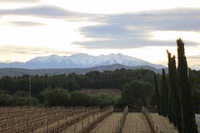 almost everything they do. Consequently, it is highly likely that a conscientious grower is also a conscientious winemaker: He or she probably keeps an immaculate cellar, uses all of the best practices, and works very hard to optimize the wine made from the vineyard’s fruit. almost everything they do. Consequently, it is highly likely that a conscientious grower is also a conscientious winemaker: He or she probably keeps an immaculate cellar, uses all of the best practices, and works very hard to optimize the wine made from the vineyard’s fruit.
So, how can we tell what the specific contribution of organic growing practices may have been when tasting a particular wine made by this person? The fact is…we can’t.
With that said, however, it isn’t true that we’re totally in the dark about the advantages of growing grapes organically. For example, if one tastes really vast numbers of wines made with organically grown grapes, that certainly enhances the likelihood--if not the certainty--that the growing practices are making a contribution to quality (however great or small). Moreover, if wines sourced from organic vineyards show higher quality in difficult growing seasons (marked by drought, for instance), then it would be reasonable to conclude that a healthier vineyard was better able to cope with a challenging vintage, and that the vineyard was probably healthier because of organic growing.
Additionally, if one found no higher-than-normal correlation between organically grown wines and problematic characteristics (such as botrytis in dry wines), then there would be good reason to believe that any benefit derived from organic practices need not be purchased at the price of problems in your glass. Even if we were to stipulate for purposes of argument that all benefits of organic growing were solely environmental and not vinous (meaning, the earth was healthier but wine quality was unaffected), wouldn’t that still be worth something to you? Finally, wouldn’t that be worth more than just a little if you also knew that buying an organically grown wine was also heightening your odds of buying a bottle that was conscientiously made in other respects as well?
If the foregoing thoughts make me seem like someone who has undergone a conversion experience of sorts, that’s exactly right. Earlier this year, I attended Millésime Bio, a “world organic wine fair” in Montpellier, France. This trade show included 689 different exhibitors, 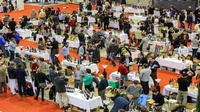 which is pretty damned impressive even before we address the fact that the average quality of the wines being poured was very, very high. which is pretty damned impressive even before we address the fact that the average quality of the wines being poured was very, very high.
I will soon have a full column up on Wine Review Online to report on my findings from the trip. When you have a chance to read it, you’ll see some reporting that may surprise you. For example, you may find it remarkable--as I did--that excellent wines are being made from organic grapes not only in arid regions where organic practices are relatively easy to follow, but also in places like Germany, Switzerland, Slovenia, Austria, Champagne, Alsace, and even notoriously damp locations such as Muscadet, Rias Baixas and Sauternes.
Check back in three weeks to see the full column. I think you’ll be impressed--as I was.
Posted by Michael Franz at 11:51 AM
|
|
March 12, 2014
We are pleased to announce the addition of Wayne Belding MS to Wine Review Online’s all-star lineup of contributors. Wayne is among the most admired and influential of the USA’s elite corps of Master Sommeliers as well as an author, educator, and former wine retailer. His 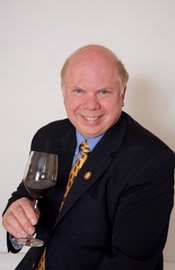 first column appears in this week’s issue, and it shows how Wayne is able to use his background as a geologist to illuminate the crucial but somewhat mysterious relationship between wine style and terroir. first column appears in this week’s issue, and it shows how Wayne is able to use his background as a geologist to illuminate the crucial but somewhat mysterious relationship between wine style and terroir.
By way of background, Wayne grew up in the mid-Hudson Valley of New York, which is now--as it happens--a burgeoning wine-producing area. After earning a degree in geology, he moved to Colorado and found his way into the oil fields of the U.S. as a geologist. Along the way, he became fascinated with wine and was drawn to the wine business.
After earning an MBA from the University of Colorado, he was an award-winning Sommelier at the Heritage Hotel in Denver with its Wine Spectator Grand Award-winning wine cellar.
In 1990, he became the 13th American to pass the demanding Master Sommelier examination and was awarded the Krug Cup for passing all three parts of the examination on his first attempt. Since that time he has been active in teaching and examining at all levels of the Master Sommelier program. He has served as Education Director of the American Chapter of the Court of Master Sommeliers for 9 years, and has served as Chairman of the American Chapter of the Court of Master Sommeliers for 3 years.
Over the years, he has taught thousands of sommeliers and industry professionals who have risen to significant positions in the trade. He was named as one of the Top 100 Most Influential Wine People in the US Wine Industry by Intowine.com in 2012 and 2013.
He is the author of a wine book for consumers -- Diving Into Wine™ and has been a frequent local, national, and international wine competition judge. He has also been a featured speaker at the Epcot Food and Wine Festival, The Telluride Wine Festival, the Euphoria Food, Wine and Music Festival, The Texsom Conference, The Taste of Vail and the Rocky Mountain Wine and Food Festival.
From 1986 - 2010, he was a co-owner of The Boulder Wine Merchant, a very successful retail store in Boulder, Colorado. Today he teaches professional and consumer wine courses in many locations throughout the USA. He also consults with clients to develop and enhance their wine education and promotion programs. And--on top of all that--he still breaks out his geologist’s rock hammer on occasion for first-hand investigation of the earth’s myriad expressions of place.
Wayne will contribute columns as well as wine reviews on a regular basis for WRO, and we are delighted to welcome him aboard.
Michael Franz
Posted by Michael Franz at 12:18 PM
|
|
March 10, 2014
On a recent Sunday evening in La Jolla, California, while the guest at a dinner organized by the San Diego chapter of the Commanderie de Bordeaux, I learned the conditions for Bordeaux in America are not as dismal as I had feared. They are worse.
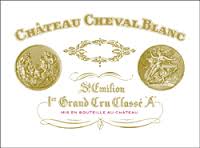 Bordeaux, for those with a short memory, was once the benchmark for American wine, particularly in California. Cabernet Sauvignon, Merlot and blends of the two were all the rage when the California wine boom got underway in the 1970s. Bordeaux, the historical home of Cab and Merlot (also Malbec, Petit Verdot and Cabernet Franc), was the model. Bordeaux, for those with a short memory, was once the benchmark for American wine, particularly in California. Cabernet Sauvignon, Merlot and blends of the two were all the rage when the California wine boom got underway in the 1970s. Bordeaux, the historical home of Cab and Merlot (also Malbec, Petit Verdot and Cabernet Franc), was the model.
Sophisticated wine shops from that era specialized in French wine, for the most part, and the most important French wine was Bordeaux. My earliest years as a collector of fine wine were nurtured by the great vintages of Bordeaux from the 1960s and ‘70s. Wonder of wonders, even on a journalist’s salary I could afford wines from the greatest chateaux in Bordeaux, fabled wines such as Lafite, Latour, Haut-Brion and Cheval Blanc.
They were expensive for their time, but hardly beyond the reach of anyone with a decent income and a passion for wine. In the spring of 1983, for example, I purchased first-growths from the spectacular 1982 vintage for $39 a bottle as “futures,” meaning I paid in advance for wines that would be delivered after maturing in bottle for approximately two years.
A few years later, when the greatness of the vintage had been established beyond any doubt and hyped by the then-emerging Robert Parker, I added many of the same 1982 first-growths to my cellar at the stunning cost of $59 a bottle.
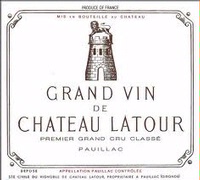 A quick glance at WineSearcher.com reveals the average bottle price of 2010 Chateau Lafite Rothschild to be $1525. Chateau Latour 2010 fetches $1779 on average, and 2010 Haut-Brion comes in at $1288. The 2010 Chateau Cheval Blanc, my favorite wine from the Right Bank commune of Saint-Emilion, would set me back $1498. Even Chateau Palmer, a third-growth Margaux, has shot up from about $100 a bottle the last time I bought a case to an average of $401 for the 2010 vintage; and the fifth-growth Chateau Lynch-Bages, once among the greatest values in wine, now gets $195 for the 2010 vintage. A quick glance at WineSearcher.com reveals the average bottle price of 2010 Chateau Lafite Rothschild to be $1525. Chateau Latour 2010 fetches $1779 on average, and 2010 Haut-Brion comes in at $1288. The 2010 Chateau Cheval Blanc, my favorite wine from the Right Bank commune of Saint-Emilion, would set me back $1498. Even Chateau Palmer, a third-growth Margaux, has shot up from about $100 a bottle the last time I bought a case to an average of $401 for the 2010 vintage; and the fifth-growth Chateau Lynch-Bages, once among the greatest values in wine, now gets $195 for the 2010 vintage.
It’s no wonder that members of the Commanderie de Bordeaux, an organization dedicated to the worship of Bordeaux, are focused on price. I was surrounded by successful doctors and lawyers who can afford expensive wine, but even they were choking on the cost of a top-notch bottle of Bordeaux.
To its credit, the Commanderie sponsors a competition each year to identify excellence in Bordeaux at $40 or less. Those wines do exist, and due to advances in viticulture and technology in Bordeaux, they have the potential to redefine value in quality Bordeaux.
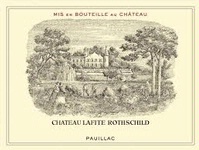 There’s one problem: demand. There is no demand for these wines. They are obscure, poorly marketed and poorly distributed. You won’t find them on most restaurant wine lists, and even if you do stumble across one of these relatively inexpensive Bordeaux in a retail wine shop, they aren’t likely to be accompanied by ratings, reviews or wine competition awards. There’s one problem: demand. There is no demand for these wines. They are obscure, poorly marketed and poorly distributed. You won’t find them on most restaurant wine lists, and even if you do stumble across one of these relatively inexpensive Bordeaux in a retail wine shop, they aren’t likely to be accompanied by ratings, reviews or wine competition awards.
Who would plunk down $40 on an unknown wine when there is so much wonderful domestic and even foreign swill (think Italy, Spain, Argentina, Chile or France’s Rhone Valley) that is familiar and safe?
Earth to Bordeaux, we have a problem.
Read more Robert Whitley columns at Creators.com.
Posted by Robert Whitley at 11:35 AM
|
|
March 5, 2014
It is one thing to have a thirst for fine wine, quite another to support the habit.
If money were no object, a top-notch Barolo, or perhaps a grand cru Burgundy, would do nicely as my house wine. That’s not very realistic, however, because I, like most everyone else, have a limited budget for wine. Thus my never-ending search for value wines that deliver outstanding quality at a modest price.
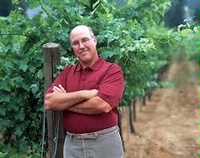 Value is relative, of course. I was recently impressed with the 2010 Chateau St. Jean Sonoma County Cabernet Sauvignon, which took a platinum award at the 2014 Winemaker Challenge International Wine Competition. At $27 retail, it compares favorably with Cabs that cost twice as much. That’s value in one sense, but even at a modest $27 it would be difficult to open a bottle every night. Value is relative, of course. I was recently impressed with the 2010 Chateau St. Jean Sonoma County Cabernet Sauvignon, which took a platinum award at the 2014 Winemaker Challenge International Wine Competition. At $27 retail, it compares favorably with Cabs that cost twice as much. That’s value in one sense, but even at a modest $27 it would be difficult to open a bottle every night.
For most of us, a great everyday wine shouldn’t cost more than $15 a bottle. With that in mind, I was pleasantly surprised at a recent tasting of Souverain, which you may remember as Chateau Souverain.
“Chateau” was dropped from the name after the parent company sold the winery’s beautiful digs in the Alexander Valley to Francis Ford Coppola. The wines are now produced at a production facility in Asti, not too far from the old chateau.
Souverain has been off the radar for several years, but is once again asserting itself with a new label and an effort to regain some of the visibility that was lost with the sale of the chateau and its attractive tasting room.
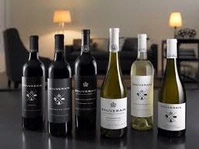 The old Chateau Souverain was renowned for value. The new Souverain is maintaining that legacy, largely due to the skill and dedication of winemaker Ed Killian, whose career spans both iterations of the winery. The old Chateau Souverain was renowned for value. The new Souverain is maintaining that legacy, largely due to the skill and dedication of winemaker Ed Killian, whose career spans both iterations of the winery.
I tasted six wines with Killian, four of them priced at $15 retail or less.
The Winemaker’s Reserve Chardonnay ($35) and Cabernet Sauvignon ($45) are superior Alexander Valley and Russian River Valley appellation wines that are competitive in their price range, but the four that carried the “North Coast” appellation – Merlot, Cabernet Sauvignon, Chardonnay and Sauvignon Blanc – were very solid wines that displayed exceptional quality for the price points.
Given that the suggested retail prices – $15 for the reds and $13 for the whites – are just that, suggestions, it stands to reason that clever wine consumers will find all four wines for even less if they shop around.
And remember this: The more you save, the more you will have left over in the budget to spring for that occasional Barolo or Burgundy.
Other Robert Whitley columns at Creators.com.
Posted by Robert Whitley at 11:55 AM
|
|
 |
|